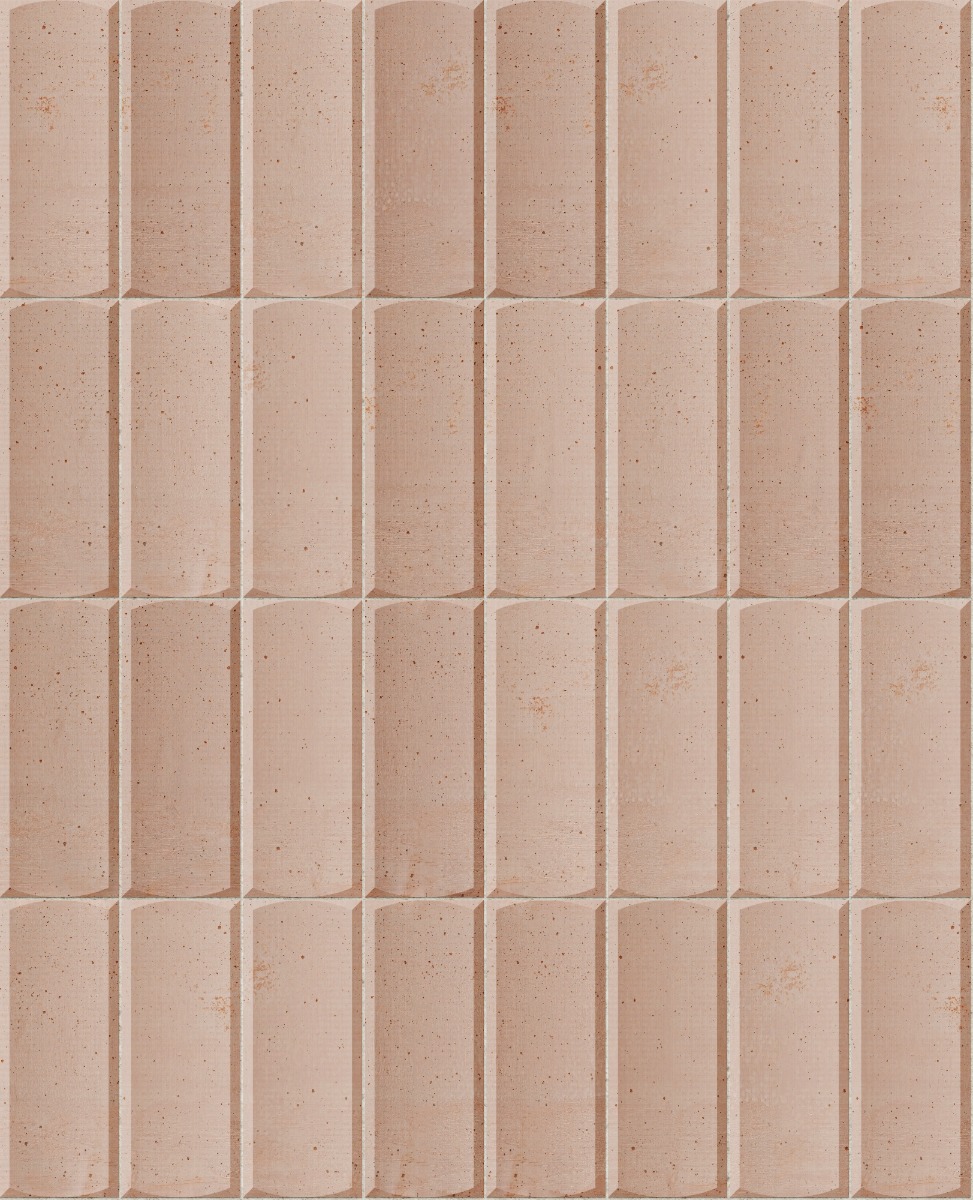Fluted Terracotta Cladding, Stack
Category
Tile
Download
Edit
Translating from Italian as ‘baked earth’, terracotta generally refers to any form of fired clay. Ranging from deep, rich, burnt, rust coloured browns to pale, pastel beige, pinks and reds, it has been used primarily for both pottery and architectural elements, with examples dating back to at least Grecian times and concurrently to Latin American civilisations. Originally employed as a brick or roof tile, its diverse, utilitarian characteristic, abundant natural resource and cheap production saw it used for everyday items from artistic, glazed figurines and sarcophagi to simple, functional urns, crockery and pots. It became popular as an intermediary or initial draft for sculptors, allowing an ease of workability and intimacy, being adapted and reshaped repeatedly before firing to set and finalise. Today, terracotta objects include plant pots, mugs, candleholders, glazed craft works and decorative tiles laid in a variety of patterns, thanks to its waterproof and fire resistant nature, despite clay being a naturally fairly porous raw material. As a building unit, it spread in use and popularity around the world from the Roman empire, commonly used as rain-screen cladding, masonry wall blocks or roofing and landscape, chimneys, driveway and patio flooring tiles, in conjunction with more decorative applications. The soft, pastel pink-red earth tones offer a soft, light, airy material to brighten spaces and reflect light, or calm busy, vibrant interiors with its gentle warmth. Small to medium pockmarks are the result of air bubbles present when fired, while linear scrapes and marks are testament to the tools and workmanship when it was crafted, both of which add a playful, dynamic, non uniform element to the surface, adding darker shadows, lighter white spots and burnt, earthen oranges to increase the range of colours, textures and tones with which terracotta can be paired, from plain, buff renders, stones and bricks to highly textured marbles, terrazzos, timbers and synthetic materials and lively patterns.
A seamless tile texture with terracotta arranged in a stack pattern. Seamless textures can be tiled repeatedly across a surface without visible seams making them useful for architectural drawings and 3D models. This image can be used as a SketchUp texture, Revit material or imported into Photoshop for use in 2D illustrations. A high resolution version of this texture is available, as well as CAD hatches and PBR maps with Architextures Pro.

